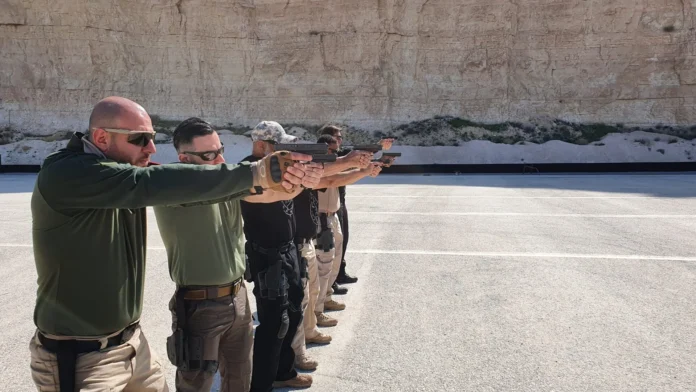In an increasingly unpredictable world, the demand for skilled executive protection professionals has surged. What does it really take to stand out in this high-stakes arena? Beyond the foundational knowledge of safety protocols and threat assessment, a true executive protection agent must fuse physical prowess with sharp mental acuity.
It’s not just about mastering defensive tactics or surveillance methods; it’s about developing an intuitive understanding of human behavior and dynamics. Each scenario presents its own unique set of challenges, requiring agents to adapt swiftly and think on their feet.
Whether navigating a crowded event or executing a discreet movement to ensure the safety of a high-profile individual, the balance between preparation and adaptability is crucial. Training at Pacific West Academy means embarking on a journey that tests not only your skills but also your resolve, resilience, and ability to anticipate the unpredictable in the world of executive protection.
What lies ahead is not merely a curriculum of techniques, but a thorough exploration of what it truly means to excel in this demanding field.
Introduction to Executive Protection

In an ever-evolving world where threats can arise unexpectedly, executive protection has emerged as a critical field, essential for ensuring the safety and security of high-profile individuals. This discipline goes far beyond mere bodyguarding; it encompasses a comprehensive approach to risk assessment, crisis management, and strategic planning.
From celebrity figures to corporate executives, the guardians of these individuals must exhibit a unique blend of skills, ranging from situational awareness to advanced defensive tactics. Those who excel in executive protection training must not only hone their physical capabilities but also cultivate a keen understanding of human behavior and environmental dynamics.
As the landscape of threats becomes increasingly complex, the demand for skilled professionals in this arena continues to grow, presenting opportunities for those willing to engage in rigorous training and lifelong learning.
The Essentials of Executive Protection Training

Executive protection training encompasses a diverse range of skills, techniques, and knowledge crucial for ensuring the safety of high-profile individuals. From understanding the intricacies of risk assessment to mastering evasive driving tactics, trainees dive deep into scenarios that demand quick thinking and decisive action.
The curriculum often weaves in elements of physical fitness, firearms proficiency, and advanced communication strategies, creating a multifaceted approach to security that goes beyond mere physicality. Additionally, psychological preparedness plays a pivotal role; agents must learn to anticipate threats and remain calm in high-pressure situations.
To truly excel, one must embrace an adaptable mindset, ready to evolve with emerging challenges in the world of executive protection, where unpredictability is the only certainty.
Physical Fitness and Conditioning

Physical fitness and conditioning form the cornerstone of effective executive protection training, as they equip professionals with the stamina and agility necessary for high-stress environments. Imagine navigating through a crowded venue, evading potential threats, or swiftly responding to emergency situations; each scenario demands not just a strong physique but also sharp mental acuity.
Endurance exercises, strength training, and flexibility routines amalgamate into a comprehensive conditioning regimen that prepares bodyguards for their demanding roles. However, it’s not solely about raw physicality.
Strategic thinking is equally critical, as the best protection agents couple their fitness with the ability to assess risks rapidly and make split-second decisions. Thus, the journey toward excellence in executive protection becomes a multifaceted endeavor, blending rigorous physical training with the mental toughness required to remain calm and composed under pressure.
Conclusion
In conclusion, excelling in executive protection training requires a combination of dedication, continuous learning, and practical experience. Aspiring professionals must cultivate a diverse skill set that includes risk assessment, situational awareness, and effective communication, all while maintaining physical fitness and mental resilience.
Institutions like Pacific West Academy play a crucial role in providing the comprehensive training and resources necessary for individuals to thrive in this demanding field. By committing to ongoing education and honing their abilities, those pursuing a career in executive protection can ensure that they not only meet industry standards but also exceed them, becoming exemplary protectors in a constantly evolving landscape.




